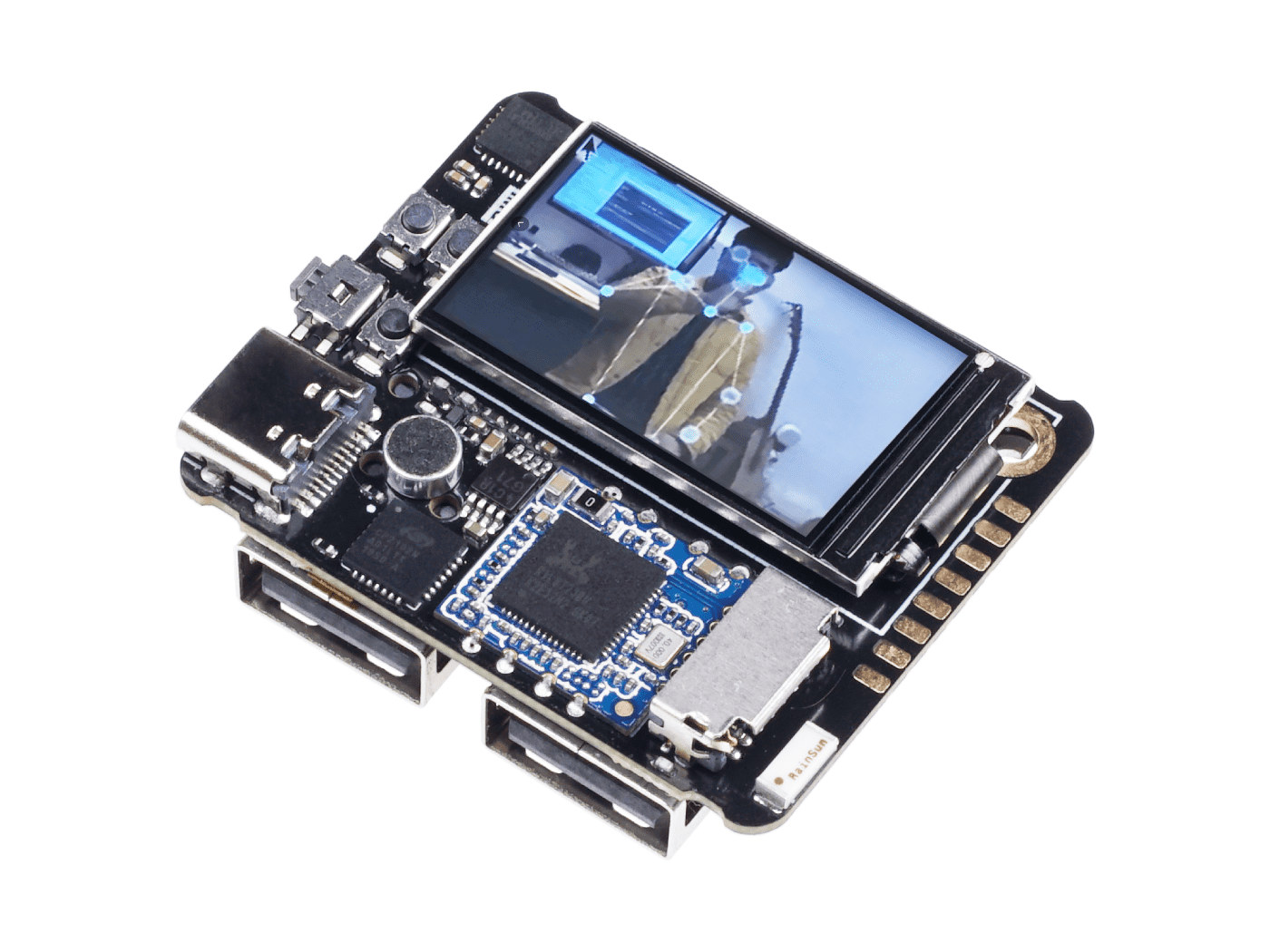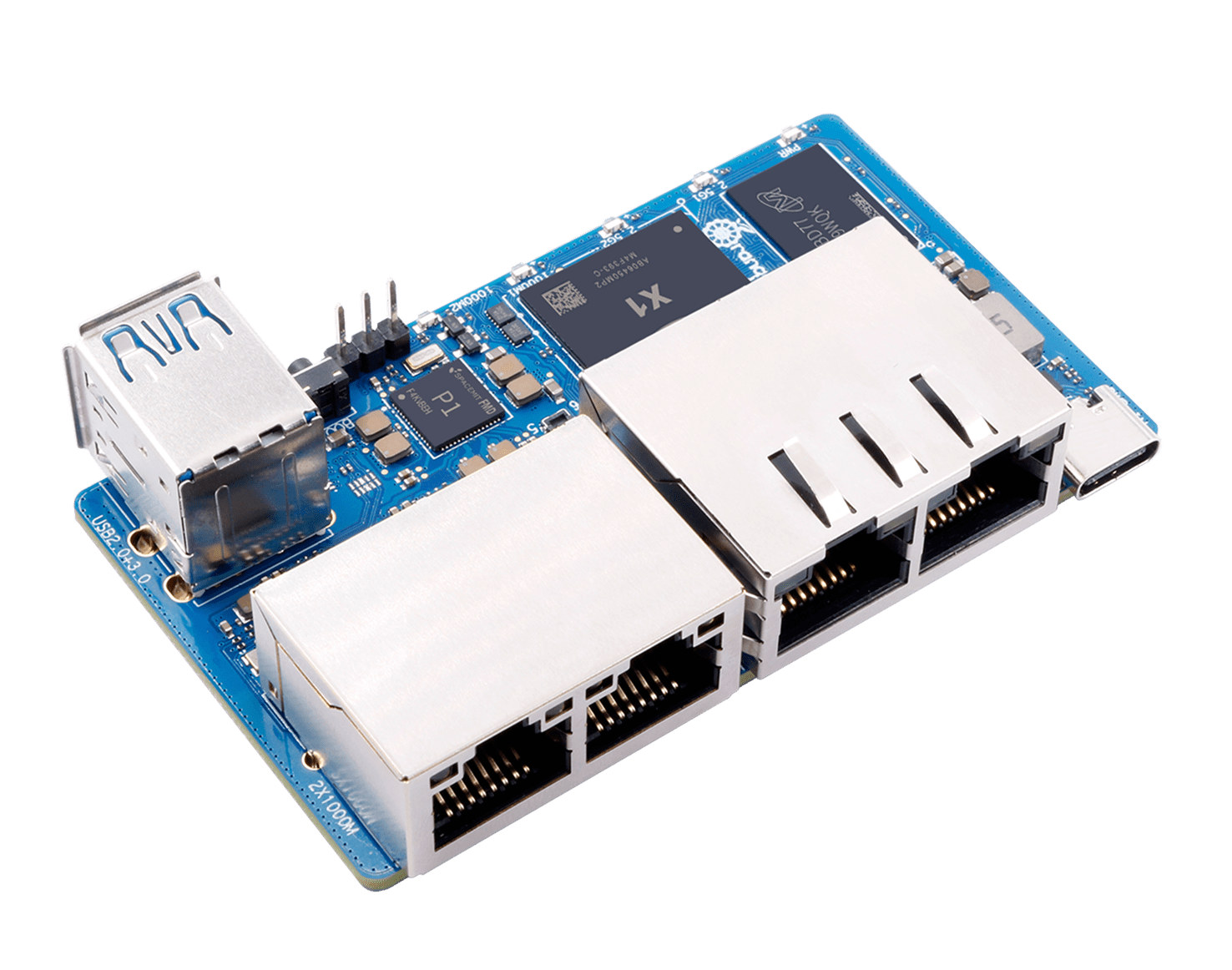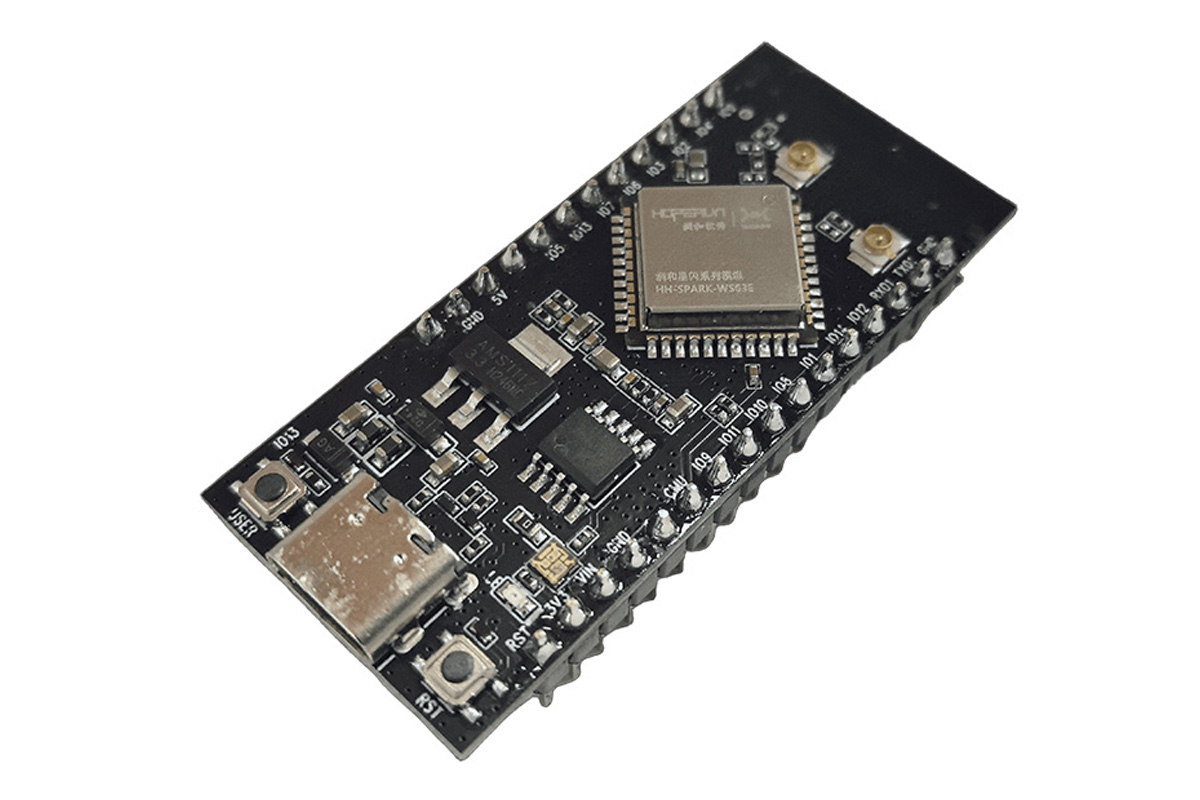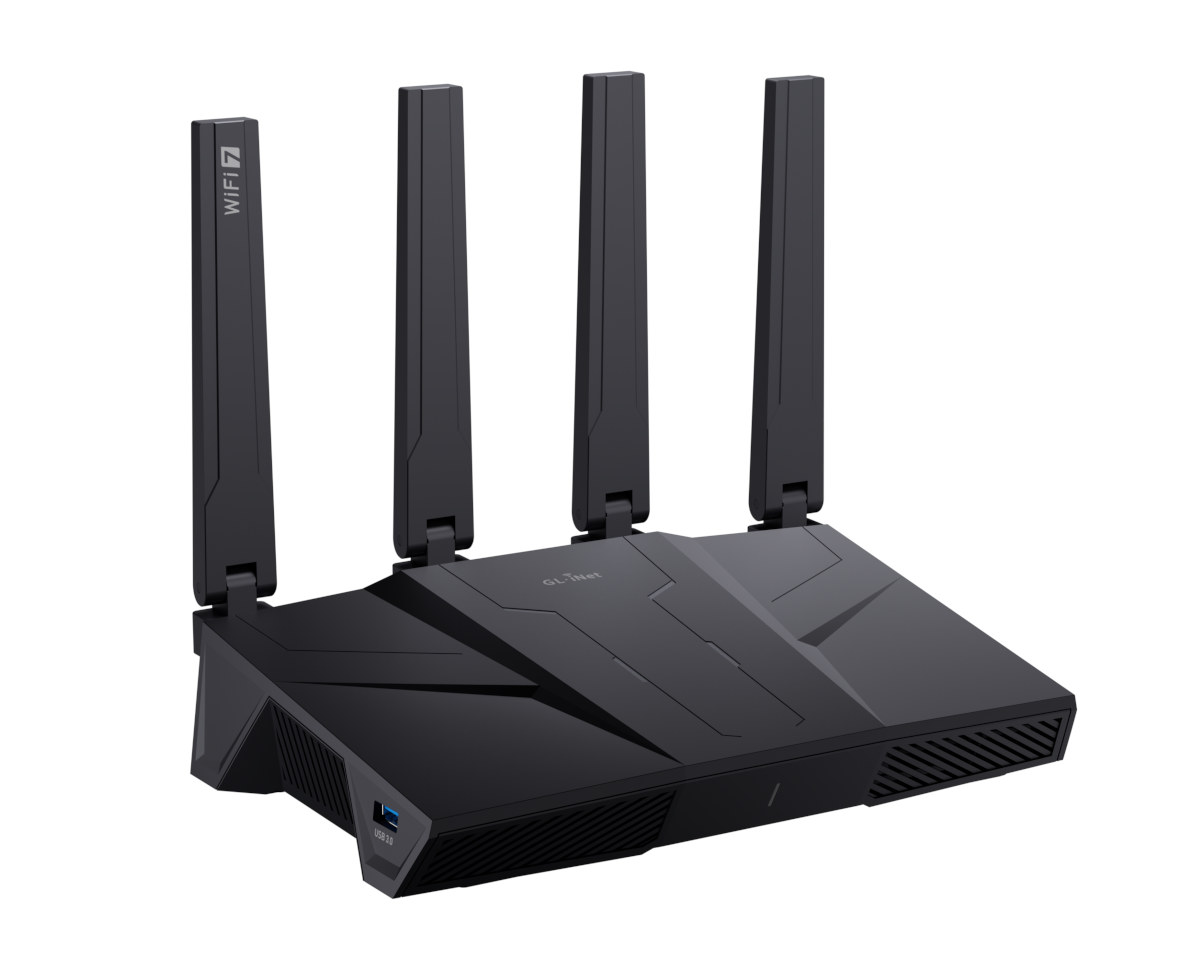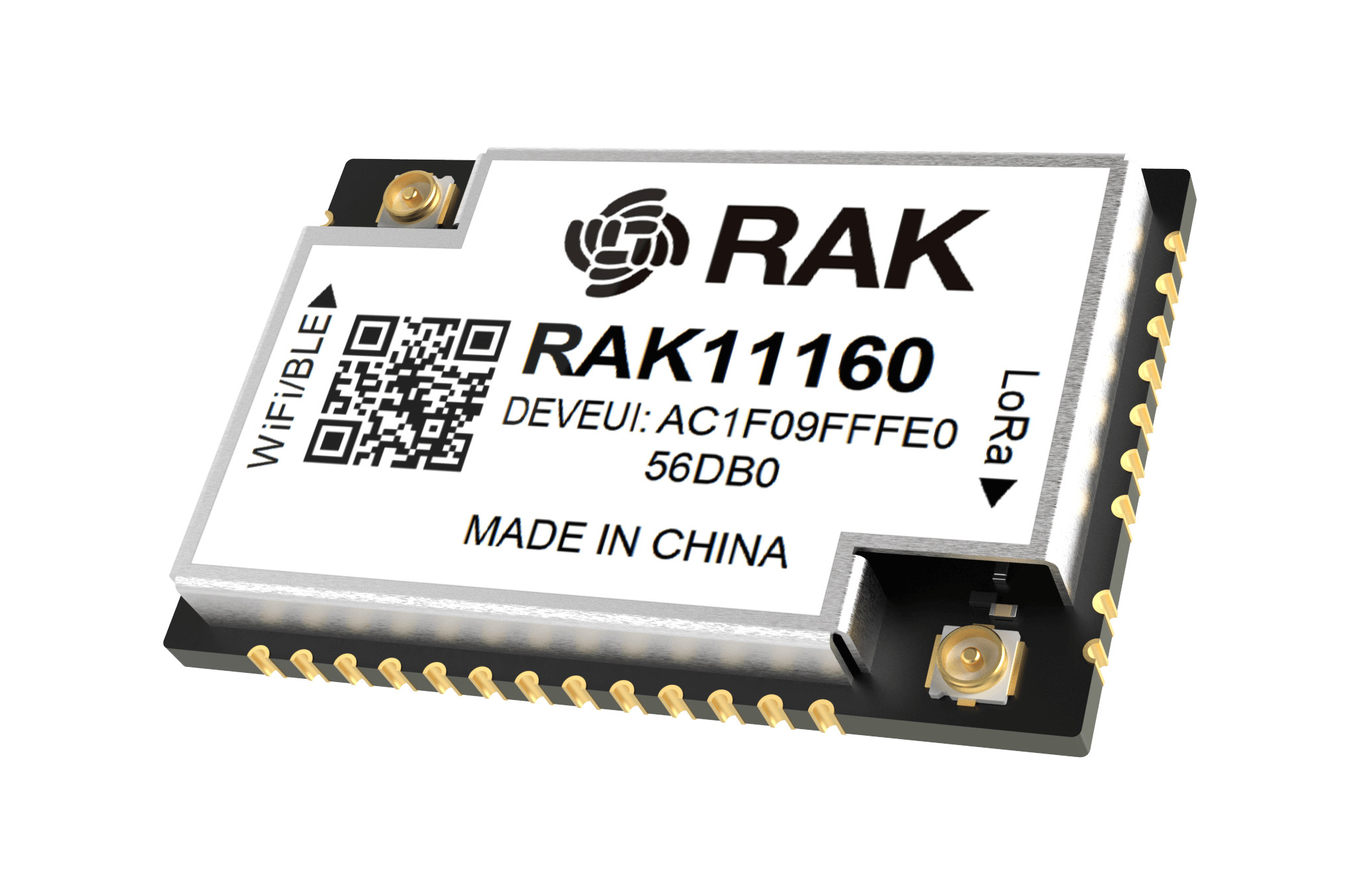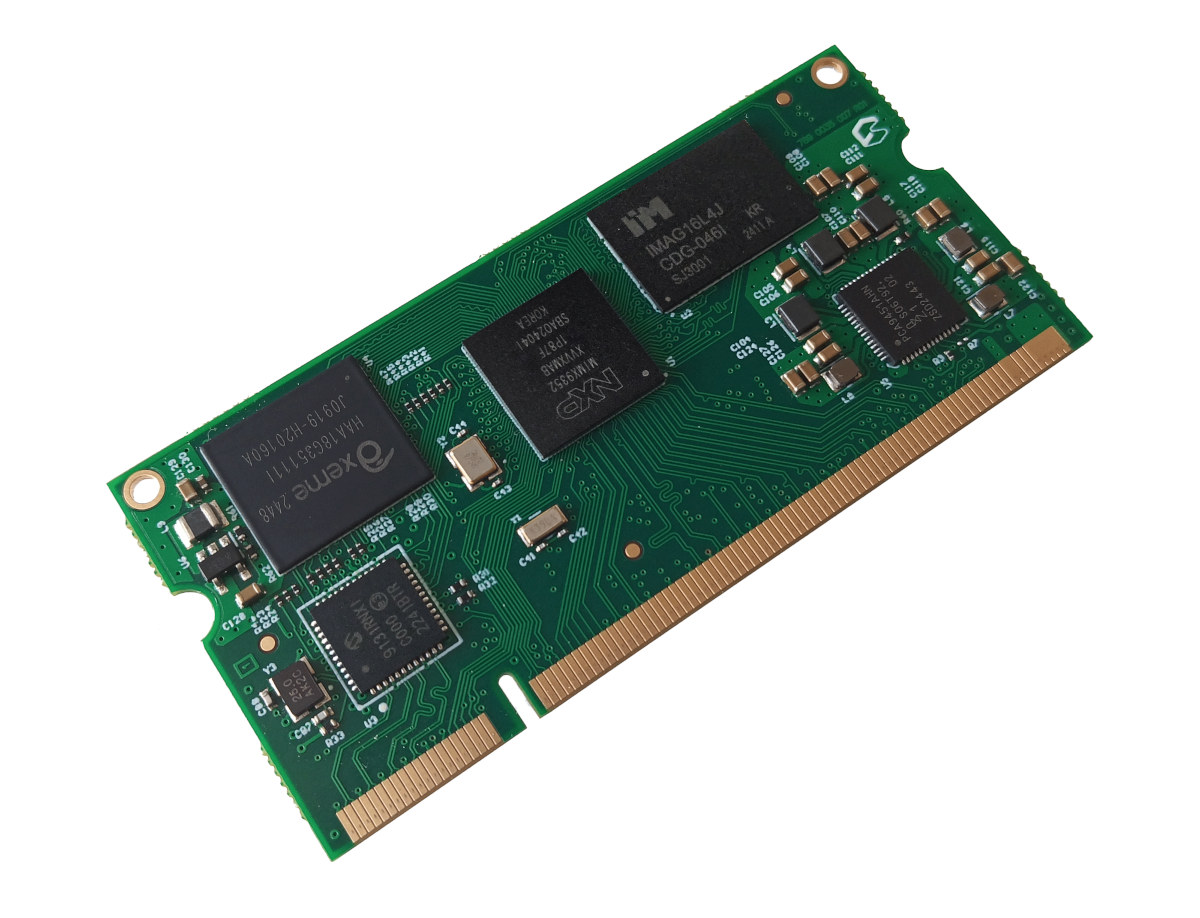Made by a Chinese engineer and content creator Zhihui Peng, the “Quantum Tiny Linux Development Kit” is a small SBC that’s smaller than an ID photo, powered by an Allwinner H3 SoC, and equipped with 512MB of RAM and a 16GB eMMC flash. It’s a design with a 31x22mm CPU module with an M.2 edge connector and a 40x35mm carrier board with a microSD card slot, WiFi 4 and Bluetooth 4.0 wireless module, a TFT display, two USB 2.0 ports, a 6-axis motion sensor, and a few buttons. Quantum Tiny specifications: Quark-N SoM SoC – Allwinner H3 CPU – Quad-core Cortex-A7 @ 1GHz GPU – Arm Mali400 MP2 GPU System Memory – 512MB LPDDR3 RAM Storage – 16GB eMMC flash M.2 edge connector with Ethernet, SPI, I2C, UART, Reusable GPIO, MIC, LINEOUT Dimensions – 31 x 22mm (6-layer PCB) Temperature Range – 0 to 80°C Atom-N Expansion Board M.2 socket […]
Quectel KCM0A5S Wi-SUN FAN module targets large IoT deployments for Smart Cities and Smart Agriculture
Quectel KCM0A5S is a Wi-SUN FAN module based on Silicon Labs EFR32FG25 Arm Cortex-M33 Sub-GHz wireless MCU, designed for applications such as street lighting, precision agriculture, industrial IoT, smart meters, and Smart Cities. Wi-SUN (IEEE 802.15.4g) is an LPWAN (Low Power Wide Area Network) standard leveraging IPv6 mesh networking for large-scale IoT deployments in Smart Cities and Smart Agriculture. The KCM0A5S module specifically supports the Wi-SUN Field Area Network (FAN) 1.1 protocol and operates across the 470–928 MHz frequency range. The module can act as a leaf node, a router, or a border router when paired with a Linux host in RCP (Radio Co-Processor) mode. Quectel KCM0A5S specifications: Wireless SoC – Silicon Labs EFR32FG25 CPU core – Arm Cortex-M33 core @ 97.5 MHz with DSP instruction and floating-point unit for signal processing Memory – 256 KB RAM data memory Storage – About 2MB flash program memory Radio – Sub-GHz radio operation […]
MeLE Quieter4C fanless mini PC is now sold without OS for $139.99 and up
The MeLE Quieter4C fanless mini PC, powered by an Intel Processor N100 SoC coupled with 8GB RAM and 128GB eMMC flash, is now available for $139.99 on Amazon without Windows 11 or any other OS pre-installed, after a $20 discount code is applied. Most mini PCs, except barebone models, ship with Windows 11 pre-installed, which isn’t ideal for users who prefer Linux or BSD distributions, as they pay extra for an unused Windows license. The Quieter4C mini PC was launched in 2023 with Windows 11 Pro, but the company is now offering the 8GB RAM/128GB eMMC flash model and other variants (see below) without OS for people who want to install their own OS. MeLE Quieter4C specifications: SoC – Intel Processor N100 CPU – Quad-core Alder Lake-N processor @ up to 3.4 GHz (Turbo) with 6MB cache GPU – 24EU Intel HD graphics @ 750 MHz TDP: 6W System Memory […]
$30+ Orange Pi R2S octa-core RISC-V router board features 2x 2.5GbE, 2x GbE, 2x USB ports
Orange Pi has released two RISC-V boards so far: the Orange Pi RV with a StarFive JH7110 quad-core SoC, and the Orange Pi RV2 with a Ky X1 octa-core processor, either a clone of the SpacemIT K1/M1 SoC or one with different CPU markings. The third RISC-V board from the company, named Orange Pi R2S, also features a Ky X1 RISC-V SoC, but is designed for headless and networking applications with two 2.5GbE ports, two GbE ports, and two USB 3.0/2.0 ports, and not much else. Orange Pi R2S specifications: SoC – Ky X1 CPU – 8-core X60 RISC-V (RV64GCVB) processor @ 1.6 GHz GPU – Imagination IMG BXE-2-32 @ 819 MHz with support for OpenGL ES3.2, Vulkan 1.3, OpenCL 3.0; 20 GFLOPS VPU H.265, H.264, VP8, VP9, MPEG4, MPEG2 decoder up to 4K @ 60fps H.265, H.264, VP8, VP9 encoder up to 4K @ 30fps Support simultaneous processing 1080p60 […]
$7 NearLink WS63E board supports Wi-Fi 6, BLE, and SparkLink Low Energy (SLE)
The HiHope_NearLink_DK_WS63E_V03 is a low-power NearLink dev board built around the HiHope HH-SPARK-WS63E module, which features the HiSilicon NearLink WS63E SoC with 2.4GHz Wi-Fi 6, BLE 5.2, and SparkLink (SLE) 1.0 support. It’s designed for Smart Home and AIoT applications requiring low power and high security. The NearLink WS63E SoC features a 240MHz 32-bit CPU, 606KB SRAM, and a 4MB flash. The board exposes various interfaces like SPI, QSPI, I2C, UART, ADC, PWM, and GPIOs through GPIO headers. Security features include hardware AES, RSA, ECC, and FIPS140-2-compliant RNG. Target applications include Smart Home appliances, wearables, medical monitoring, industrial testing, energy management, and Smart Agriculture. HiHope NearLink_DK_WS63E specifications: SoC – HiSilicon NearLink WS63E 32-bit microprocessor up to 240 MHz 606 KB SRAM, 300 KB ROM 4MB embedded Flash Wireless (2.4GHz) Wi-Fi IEEE 802.11b/g/n/ax (ch1–ch14), 20/40MHz (n), 20MHz (ax) Data rates: up to 150 Mbps (HT40), 114.7 Mbps (HE20) MAC: 802.11d/e/i/k/v/w; Features: A-MPDU, […]
GL.iNet Flint 3 (GL-BE9300) is an affordable tri-band WiFi 7 router with 5 2.5GbE ports
The GL.iNet Flint 3 (codenamed GL-BE9300) is an affordable tri-band WiFi 7 BE9300 router with five 2.5GbE RJ45 ports supporting 10Gbps aggregation, and now available for pre-order for $119 to $159. It follows the lower-end GL.iNet Slate 7 (GL-BE3600) WiFi 7 dual-band travel router introduced a few months ago. The tri-band WiFi 7 router is powered by a 1.5 GHz quad-core Qualcomm processor coupled with 1GB RAM and 8GB eMMC flash for the OS, features a USB 3.0 port for smartphone tethering or cellular dongle, and supports up to 680 Mbps VPN throughput using WireGuard or OpenVPN. Other features include AdGuard Home, failover, load balancing, and more. GL.iNet Flint 3 specifications: CPU – Qualcomm quad-core @1.5 GHz; unamed, but likely Qualcomm IPQ5332 Memory – 1 GB DDR4 Storage – 8 GB eMMC flash Networking WiFi 7 Protocol – IEEE 802.11a/b/g/n/ac/ax/be Wi-Fi Speed – 688Mbps (2.4GHz), 2882Mbps (5GHz), 5765Mbps (6GHz) 4x […]
$6.5 RAK11160 LoRaWAN, WiFi, and BLE module pairs ESP32-C2 with STM32WLE5 for low-power, long-range IoT
RAKwireless RAK11160 is a new low-cost, low-power LoRaWAN, WiFi 4, and Bluetooth LE module based on ESP32-C2 (ESP8684) wireless microcontroller and STM32WLE5 LoRa SoC for LPWAN IoT applications. The company noticed that many people would combine their STMicro STM32WL-based RAK3172 WisDuo LoRaWAN module with an ESP32 module to add WiFi and/or Bluetooth connectivity to their projects besides LoRaWAN. So RAKwireless decided to offer a module combining both STM32WL and ESP32-C2 to offer a cheap and much more compact solution to their customers. RAK1160 was born. RAwireless RAK11160 specifications: LPWAN SoC/SiP – STMicro STM32WLE5 Core – Arm Cortex-M4 MCU @ 48 MHz Memory – 64 KB RAM Storage – 256 KB flash memory with ECC Wireless – Sub-GHz radio based on Semtech SX126x LoRaWAN 1.0.4 specification compliant Supported bands – EU433, CN470, IN865, EU868, AU915, US915, KR920, RU864, and AS923 LoRaWAN Activation by OTAA/ABP LoRa Point-to-Point (P2P) communication Tx Power Output – […]
Calixto Systems introduces i.MX93 VERSA SO-DIMM SoM and EVK with NXP i.MX 93 Edge AI SoC
India-based Calixto Systems has unveiled the i.MX93 VERSA SO-DIMM system-on-module (SoM) powered by an NXP i.MX 93 Arm Cortex-A55/M33 SoC with Ethos-U65 micro NPU for Edge AI applications, as well as an evaluation kit (EVK). The system-on-module features up to 2GB LPDDR4x RAM, 16GB eMMC flash, a gigabit Ethernet PHY, and exposes various I/Os through a 200-pin SO-DIMM edge connector, such as MIPI DSI, LVDS, and parallel RGB display interfaces, MIPI CSI and Parallel camera interfaces, dual GbE (on PHY on-module, one on carrier), and more. The i.MX93 VERSA module targets smart industrial automation, healthcare, retail, and connected edge systems with specific size, performance, and power efficiency requirements. i.MX93 VERSA specifications: SoC – NXP i.MX 93 CPU Up to 2x Arm Cortex-A55 up to 1.7 GHz 2x Arm Cortex-M33 up to 250 MHz GPU – PXP 2D GPU with blending/composition, resize, color space conversion NPU – Arm Ethos-U65 NPU @ […]


